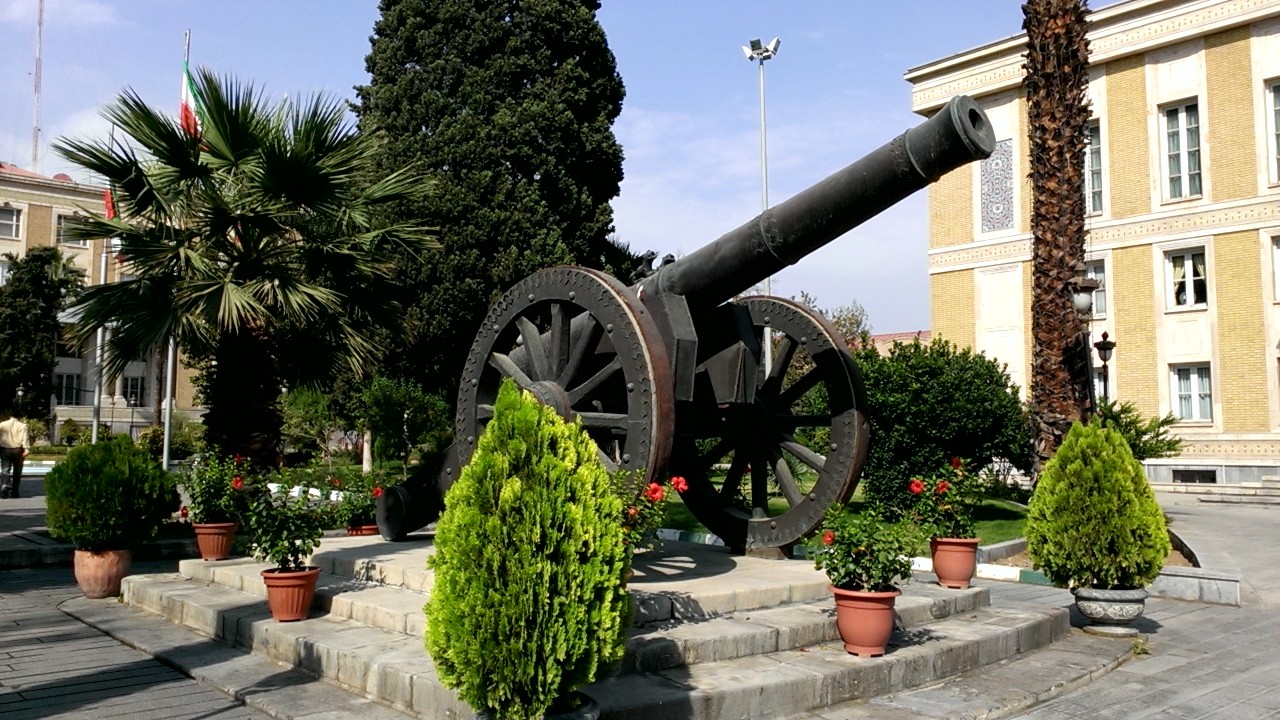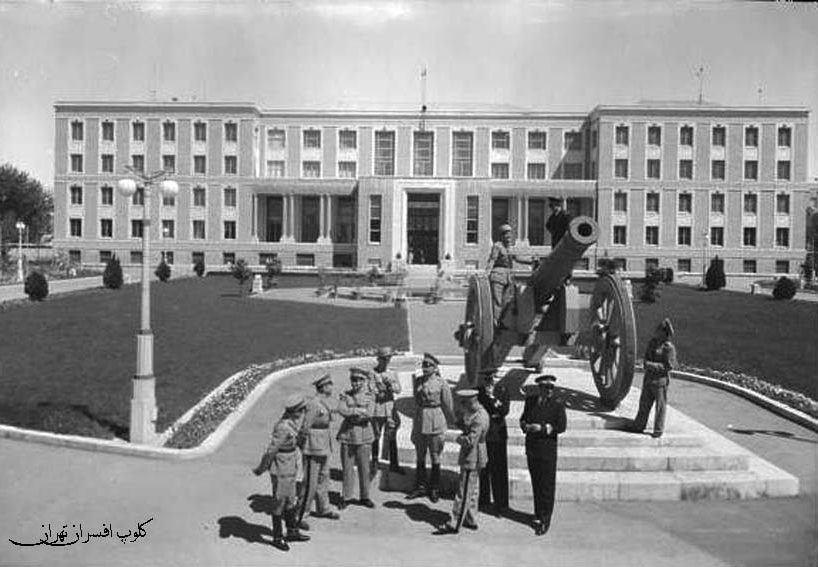Pearl Cannon on:
[Wikipedia]
[Google]
[Amazon]
The Pearl Cannon (
 This cannon has been part of many superstitious practices by the people of Tehran. It was once common for women to tie a knot to it, believing that this would grant a wish, generally for a spouse or fertility and on
This cannon has been part of many superstitious practices by the people of Tehran. It was once common for women to tie a knot to it, believing that this would grant a wish, generally for a spouse or fertility and on

Persian
Persian may refer to:
* People and things from Iran, historically called ''Persia'' in the English language
** Persians, the majority ethnic group in Iran, not to be conflated with the Iranic peoples
** Persian language, an Iranian language of the ...
: توپ مروارید) is an old cannon
A cannon is a large- caliber gun classified as a type of artillery, which usually launches a projectile using explosive chemical propellant. Gunpowder ("black powder") was the primary propellant before the invention of smokeless powder ...
in Tehran
Tehran (; fa, تهران ) is the largest city in Tehran Province and the capital of Iran. With a population of around 9 million in the city and around 16 million in the larger metropolitan area of Greater Tehran, Tehran is the most popul ...
, Iran
Iran, officially the Islamic Republic of Iran, and also called Persia, is a country located in Western Asia. It is bordered by Iraq and Turkey to the west, by Azerbaijan and Armenia to the northwest, by the Caspian Sea and Turkmeni ...
. It was involved in several cultural practices of the people of Tehran in Qajar era. It is now located north of the National Garden, in front of the Ministry of Foreign Affairs In many countries, the Ministry of Foreign Affairs is the government department responsible for the state's diplomacy, bilateral, and multilateral relations affairs as well as for providing support for a country's citizens who are abroad. The entit ...
building.
The cannon was first placed in Arg Square, before being transferred to a place known as the Officers' Club. The Officers' Club was later used as an office for the Ministry of Foreign Affairs, and the cannon remains there today. The namesake of the cannon is unknown. Some, however, have suggested that it is named after several pearl
A pearl is a hard, glistening object produced within the soft tissue (specifically the mantle) of a living shelled mollusk or another animal, such as fossil conulariids. Just like the shell of a mollusk, a pearl is composed of calcium carb ...
necklaces decorating its muzzle.

Oral Culture
Many stories are told about the origins of the Pearl Cannon. For instance, it is said that Shah Abbas took it from the Portuguese atHormuz Island
Hormuz Island (; fa, جزیره هرمز ''Jazireh-ye Hormoz''), also spelled Hormoz, is an Iranian island in the Persian Gulf. Located in the Strait of Hormuz, off the Iranian coast, the island is part of Hormozgan Province. It is sparsely i ...
, or that it was built on the orders of Karim Khan Zand in Shiraz
Shiraz (; fa, شیراز, Širâz ) is the List of largest cities of Iran, fifth-most-populous city of Iran and the capital of Fars province, Fars Province, which has been historically known as Pars (Sasanian province), Pars () and Persis. As o ...
, or that it was taken from India by Nader Shah Afshar in his Indian campaign.
On the cannon itself, it is written that it was made by an Isfahan
Isfahan ( fa, اصفهان, Esfahân ), from its Achaemenid empire, ancient designation ''Aspadana'' and, later, ''Spahan'' in Sassanian Empire, middle Persian, rendered in English as ''Ispahan'', is a major city in the Greater Isfahan Regio ...
i molder named Esmaiil Rikhtegar during the year 1233 of the lunar Hijri calendar (1817-1818 CE) on the orders of Fath-Ali Shah Qajar
Fath-Ali Shah Qajar ( fa, فتحعلىشاه قاجار, Fatḥ-ʻAli Šâh Qâjâr; May 1769 – 24 October 1834) was the second Shah (king) of Qajar Iran. He reigned from 17 June 1797 until his death on 24 October 1834. His reign saw the irr ...
.
 This cannon has been part of many superstitious practices by the people of Tehran. It was once common for women to tie a knot to it, believing that this would grant a wish, generally for a spouse or fertility and on
This cannon has been part of many superstitious practices by the people of Tehran. It was once common for women to tie a knot to it, believing that this would grant a wish, generally for a spouse or fertility and on Qadr Night
The Qadr Night or Laylat al-Qadr ( ar, لیلة القدر), variously rendered in English as the Night of Decree, Night of Power, Night of Value, Night of Destiny, or Night of Measures, is, in Islamic belief, the night when the Quran was firs ...
s or on Chaharshanbe Suri
Chaharshanbeh Suri or Charshanba Suri ( fa, چهارشنبهسوری, Čahāršanbe suri; ), is an Iranian festival of the fire dance celebrated on the eve of the last Wednesday of the year. It is the first festivity of the Nowruz Celebratio ...
. The people of Tehran would give gifts and bribes to the guards of the cannon, so they could be left alone in their rituals.
Criminals that were pursued by policemen used to take refuge under the cannon's shadow, and due to their beliefs, the policemen refused to arrest them, instead opting to wait until hunger drove them out from their position.{{Cite web, last=Foundation, first=Encyclopaedia Iranica, title=Welcome to Encyclopaedia Iranica, url=https://iranicaonline.org/articles/bast-sanctuary-asylum, url-status=live, access-date=2021-11-05, website=iranicaonline.org, language=en-US
Novel
Sadegh Hedayat
Sadegh Hedayat ( fa, صادق هدایت ; 17 February 1903 – 9 April 1951) was an Iranian writer and translator. Best known for his novel '' The Blind Owl'', he was one of the earliest Iranian writers to adopt literary modernism in their care ...
, author of The Blind Owl
''The Blind Owl'' (1936; fa, بوف کور, ''Boof-e koor'', ) is Sadegh Hedayat's magnum opus and a major literary work of 20th century Iran. Written in Persian, it is narrated by an unnamed pen case painter, who addresses his murderous conf ...
, wrote the book Pearl Cannon (Tup-e Morvari) in 1947, named after the cannon. In the book, Hedayat criticizes the superstitions of his time and people's beliefs about the cannon, considering Iran's broader social and political context.

References